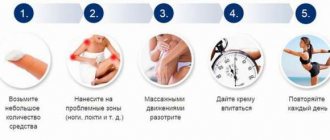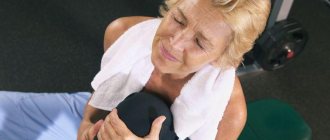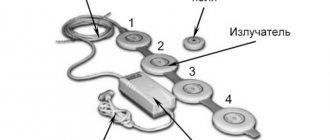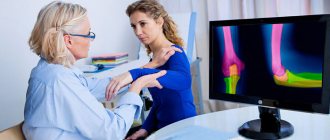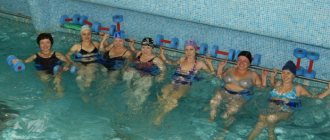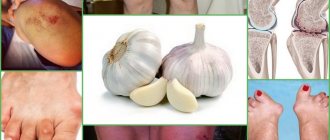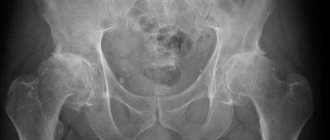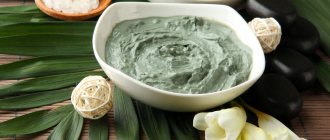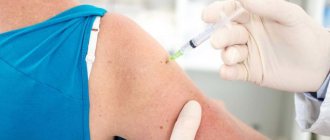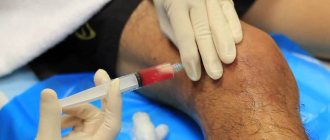|
|
Plasmolifting or PRP therapy of the knee joint (plasma rich platelet) is a medical procedure designed to enhance regenerative processes in the knee, eliminate pain, and improve joint function. It is used in the treatment of many diseases - dystrophic, traumatic, inflammatory. Most often used for gonarthrosis or knee injury.
What is this?
PRP is platelet-rich plasma. The patient's own plasma is used during the treatment process. It is prepared from autologous blood immediately before injection into the knee.
Platelets are the formed elements of blood that perform the function of forming a blood clot. By gluing, they initially form a “plug” in damaged vessels. This happens immediately after the injury. Then platelets provide their surface for the formation of the main reactions of plasma blood coagulation.
Not long ago, another important function of platelets was established. It turned out that they secrete a large number of growth factors and take part in regenerative processes.
Normally, the concentration of platelets in the blood ranges from 180 to 360 thousand cells per μl. Even this amount is enough to somewhat speed up the regenerative processes. But they occur faster and more intensely if a lot of platelets are injected into the joint. Therefore, the plasma is pre-prepared. Other formed elements of blood are removed from it. The platelet concentration increases 5 or more times.
It has been established that the maximum regenerative potential of tissues is achieved when they are exposed to plasma containing at least 1 million platelets per 1 μl. Further increases do not provide significant benefits. If the platelet count exceeds 1.8 million, inflammatory reactions may be enhanced. Therefore, too high a concentration of these cells is not recommended for use for intra-articular administration.
Principle of the method
The PRP method in the treatment of knee joints is based on enhancing the regeneration of intra-articular tissues. Thanks to platelet-rich plasma, cartilage, menisci, ligaments and other tissues are restored faster.
Even in ancient times, doctors drew attention to the fact that traumatic injuries accompanied by the formation of a hematoma heal much faster. The reasons for this have been established only in recent decades. It turned out that platelets secrete a number of substances that accelerate regeneration. These are the growth factors:
- epidermal;
- epithelial growth;
- endothelium;
- fibroblasts;
- insulin-like;
- transformative.
These substances have a polypeptide (protein) structure. They have different purposes. But all of these compounds take part in tissue regeneration. They stimulate the mitotic activity of cells, accelerate their growth and division.
Plasmolifting (PRP therapy) of the knee joint makes it possible to significantly increase the intensity of reparative processes of both soft and bone tissues. In medicine, platelet-rich plasma is increasingly used. It is used for any injuries: soft tissue damage, muscle and ligament ruptures, bone fractures. All types of tissues regenerate faster if a sufficient number of platelets are present.
We recommend reading:
- Plasmolifting and orthoplasma
- Plasmolifting of the shoulder joint
- Treatment of joints with blood plasma
- Autoplasmotherapy of joints
- Tests for plasma lifting
- Plasmolifting for immunity
- Plasmolifting in orthopedics and traumatology
- Plasmolifting for the treatment of joints
- Plasmolifting of the knee joint
- Plasmolifting for arthrosis
- Plasmolifting for coxarthrosis
- Plasmolifting restrictions
- Plasmolifting for arthritis
- Plasmolifting for osteochondrosis
- Plasmolifting of the hip joint
More articles →
Indications
Among knee joint diseases, the following diseases and conditions are considered indications for the use of PRP:
Arthrosis of the knee joint or gonarthrosis. A degenerative disease associated with the gradual degradation of articular cartilage. The use of PRP at stages 1-2 can improve regenerative processes in cartilage tissue. Thanks to this effect, a significant slowdown in the development of the pathological process is achieved. With the help of PRP, doctors are able to eliminate many symptoms of arthrosis, delay the need for knee replacement, or even abandon the operation completely if an effective conservative therapy regimen is used, in which PRP is one of the elements.
Injuries. The knee is often injured by athletes. Most often these are ligament ruptures and meniscus damage. Intra-articular fractures occur. If the doctor determines that conservative treatment is sufficient, he or she may use PRP to speed up the healing of the lesions. Otherwise, they can take a very long time to recover. This process takes weeks, or even months.
Operations. After arthroscopic surgery on the knee, a rehabilitation period follows. It continues until all tissue damage is restored. PRP can be used to speed up this process.
Defects of the articular surface. PRP is used for cartilage deficiency of articular surfaces of any origin. The cause may be injuries, arthrosis, inflammatory diseases of the knee, metabolic pathologies, psoriasis, systemic connective tissue lesions and other diseases. With a small defect, it is possible to enhance the regenerative processes of PRP. If there is a significant area of cartilage thinning, surgical treatment is indicated.
Prevention of joint diseases
When your joints hurt, physical activity is important. Surprisingly, keeping your joints moving is essential. By the way, in one of our blog articles we discussed the 3 main mistakes in the treatment of joints. Be sure to read it!
Do daily, gentle stretches that move your joints through their full range of motion. Control your posture. A physical therapist can show you how to sit, stand, and move correctly.
If joint pain and discomfort is preventing you from being active, a physical therapist is also needed. He will select forms of physical activity that can be combined with your symptoms. For example, exercises that strengthen the muscles around the joints without damaging the joints themselves. By the way, consultation with a physiotherapist is included in the basic program of our sanatorium.
It is important that inactivity leads to loss of joint mobility and muscle strength. Excess weight is also harmful: it increases complications and contributes to pain. Smoking actually causes stress on connective tissues, which only worsens the disease.
Walking, cycling and swimming improve your mood and help control weight. Workouts involving strong impacts and repetitive movements (running, jumping, tennis, impact aerobics) are best avoided. Know your limits. Balance activity and rest, do not overdo it. Clearly, lifestyle changes are important for pain relief.
The sanatorium rhythm will help you smoothly adapt to unusual conditions. Conditions for health and self-care. This is a great way to recover and compensate for losses.
Plasmolifting of joints in a sanatorium
In our sanatorium, plasma lifting of joints can be included in any program, based on the doctor’s recommendations, including in the basic program of sanatorium treatment. In addition, you will find a favorable climate in the Caucasian Mineral Waters region, mineral water and silt mud itself, a balanced diet and physical activity.
We have already talked about another painless and effective method of treating joints – magnetic therapy. It affects specific parts of the body or the entire body with magnetic fields that have beneficial effects on health. Like fresh air, beautiful views, time to relax and disconnect from the world for a couple of weeks.
Subscribe to our blog to learn even more about how to stay healthy - treatment methods, disease prevention, as well as relaxation in the Caucasian Mineral Waters.
April 14, 2021 | joints
How do they do it?
Blood is taken from the patient from the cubital vein. He then waits for 20 minutes for the intra-articular injection. During this time, the drug is prepared. Centrifugation is used. It can be one- or two-stage. In the first case, it is possible to better preserve the integrity of platelets, in the second, their higher concentration is obtained.
After preparing PRP, the resulting plasma is administered intra-articularly. The injection site is numbed with an anesthetic. Therefore, the patient does not feel significant pain during the procedure. In terms of tolerability, it can be compared to an intramuscular injection - unpleasant, but quite tolerable.
Some patients feel a feeling of fullness inside the joint. Especially in cases where a large volume of plasma is administered. After the injection, the doctor asks the patient to perform flexion and extension movements in the knee joint so that the plasma is better distributed in the joint cavity. After 10 minutes the patient goes home. He does not require hospitalization or additional observation.
Plasma can be used in courses of varying durations. Most often, PRP is administered once a week. A total of 3 to 7 injections are required. The treatment regimen is selected individually. The doctor forms it based on the clinical situation and the purposes of using platelet-rich plasma.
Effectiveness for arthrosis
When to expect results depends on the purpose of using PRP and the indications for treatment. In any case, it does not develop instantly. PRP is not a pain reliever. Platelet-rich plasma only enhances tissue regeneration, and this process takes quite a long time.
For arthrosis of the knee joint, the maximum effect develops 3-6 months after the start of treatment. Only a few patients report a decrease in pain after the first injection. For others, the first results are achieved within a month from the start of therapy.
In comparative studies, PRP shows much better results than intra-articular glucocorticoids. These differences are especially noticeable in grade 3 gonarthrosis. Pain syndrome in patients with this method of treatment is less pronounced. In addition, PRP has a more beneficial effect on cartilage - plasma stimulates its regeneration, while glucocorticoids, on the contrary, have a chondrotoxic effect.
According to E.Kon, 80% of people were satisfied with the results of the treatment after a series of injections of platelet-rich plasma for osteochondrosis. Results were assessed after 5 weeks. Another study found that treatment results were rated as positive by 67.3% of patients six months after undergoing PRP therapy for knee arthrosis. In the control group this figure was only 4.3%.
Another study calculated the average amount of time that elapses from the first injection until the therapeutic result is obtained. Patients considered this to be a reduction in clinical symptoms. This period was 17.63 days.
It should be noted that PRP has two main effects: anti-inflammatory and reparative. When surveying patients, only short-term symptomatic effects are taken into account. It develops more quickly after administration of platelet-rich plasma, but goes away more quickly after completion of the course of therapy. The first results of treatment are due to hyperplasia of the synovial membrane and modulation of the level of cytokines in the articular cavity.
At the same time, the main effect of PRP is chondrogenesis. But this process is happening too slowly. Patients cannot feel it. Only by comparing the symptoms and radiological parameters of the main and control groups are researchers able to obtain data on the effectiveness of PRP therapy for the knee joint several months after the course of treatment.
Contraindications
Despite the good tolerability and absence of side effects, the new method has contraindications.
Absolute
Conditions for which PRP treatment is strictly contraindicated:
- pregnancy;
- lactation;
- period of menstruation;
- oncological and autoimmune diseases;
- violation of the blood clotting process;
- low platelet count (thrombocytopenia);
- hemoglobin level is less than 90 g/l;
- state of immunodeficiency.
If the patient has one of the listed conditions, the course is either postponed or cancelled.
Relative
These are passing phenomena, after which you can begin procedures. In this list:
- acute infectious and viral diseases - FLU, ARVI, herpes, intestinal infections, etc.;
- high body temperature exceeding 38C;
- taking medications that affect clotting.
After recovery or drug withdrawal, a person has the opportunity to use plasma therapy.
After operation
PRP knee therapy is used after ligament and meniscus surgery. There are many studies demonstrating the effectiveness of this procedure for accelerating the recovery of intra-articular structures.
One common area of application remains rupture of the anterior cruciate ligament of the knee. She herself cannot fully recover from a complete rupture. Therefore, to normalize its fusion (ligamentization), surgical treatment is used. Free autografts are used.
There are different types of them. STG (intrinsic tendon) and BTV grafts (“bone-tendon-bone”) are used. In both the first and second cases, the introduction of PRP into the knee allows one to achieve significant positive treatment results.
First of all, PRP is performed to speed up the rehabilitation period. Studies show that when using STG grafts, the ligamentization period is on average 369 days (about 1 year), while the use of PRP reduces this period to 177 days (6 months). That is, the terms are reduced by 2 times.
Even more significant results can be achieved when using PRP therapy for the knee after using a VTV graft to reconstruct the anterior cruciate ligament. The average time for ligamentization is about 1 year. When using PRP it was possible to reduce it to 3.5 months.
Studies demonstrate that ligamentization after surgery is significantly better in patients receiving PRP therapy than in the control group. True, the results are better only 4-6 months after surgery. The examination of patients after 1 year shows that the final results are the same.
However, PRP therapy can significantly reduce the recovery time for patients after surgery. This is especially important for professional athletes who want to return to training as quickly as possible.
Advantages
PRP has many advantages over other therapeutic modalities. They are as follows:
- Simultaneously symptomatic and therapeutic effects. A person feels the results of therapy within 2 weeks after its start, and after a few months receives good long-term results, consisting in strengthening of regenerative processes.
- The procedure is completely safe. It is not technically difficult for a doctor. Your own blood does not cause complications or immune reactions.
- The treatment is well tolerated by patients, judging by their reviews of the procedure.
- PRP of the knee allows you to delay and sometimes even avoid the need for surgical treatment (for example, for arthrosis or meniscal damage).
- Low cost of treatment compared to surgical methods.
- Plasma therapy makes it possible to reduce the dosage of non-steroidal anti-inflammatory drugs that are toxic to the gastrointestinal tract.
* Article source: https://koleno.su
Safety
PRP therapy for the knee joint is one of the safest treatment methods. There is no risk of complications. The exception is the human factor. The doctor may miss the needle into the joint or cause an infection if he does not follow the rules of asepsis and antisepsis.
But if you turn to a highly qualified specialist who has extensive experience in performing this type of medical manipulation, the procedure will go smoothly. If a joint is deformed, if it is difficult for a doctor to get into its cavity, ultrasound can be used. Therefore, there is no risk of damage to healthy tissue during PRP therapy.
The drug itself for injection into the joint cavity is prepared from the patient’s blood. Therefore, the risk of transmission of infection or allergic reactions is eliminated. Your own blood does not carry an antigenic load. It is completely safe.
Compatibility with other therapeutic procedures
In our clinic, plasma therapy is combined with other non-surgical methods of treating the musculoskeletal system:
- acupuncture;
- manual therapy;
- different types of massage – acupressure, classic, Thai, etc.;
- hirudotherapy - treatment using leeches;
- exposure to vacuum cans;
- kinesiotherapy under the influence of loads;
- kinesio taping (using cotton tapes);
- blockades with painkillers and anti-inflammatory drugs.
A comprehensive course of joint treatment, using prp therapy and other methods, gives the fastest and most lasting effect.
Themes
Joints, Treatment methods Date of publication: 12/09/2019 Date of update: 06/08/2020
Reader rating
Rating: 4.33 / 5 (3)
